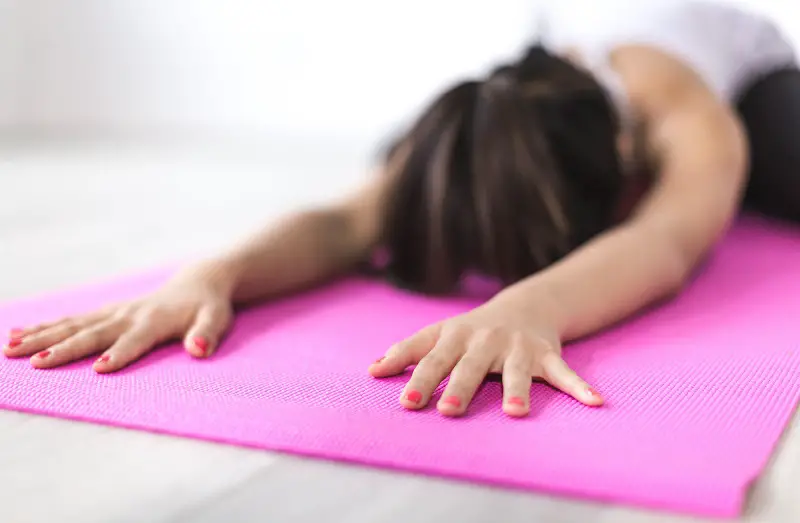
6 ways to stay fit and healthy during lockdown if you’re disabled
The lockdown means that many of us aren’t able to keep fit and healthy in the same way we used to. But there are still ways you can keep your body in tip-top condition, whatever your disability and even if you can’t leave the house. Here, writer and fitness instructor Mish Choudhury, who has autism, talks through 6 ways you can stay healthy – and 1 involves rest!
My name is Mish and I have spent years creating tailored strategies that identify and resolve individual challenges and lifestyle issues that stop someone from exercising. I have advised hundreds of people on how to approach personal obstacles, such as:
- not having enough time for fitness
- having reduced mobility, flexibility or dexterity
- having no access to a gym facility
- suffering from phobias of social spaces
- suffering from depression and stress.
Although I do not specialise in training for disabled people, I have trained people who are blind, have prolapsed discs, osteoarthritis, personality disorders and multiple sclerosis.
I myself am autistic and work in the equality field. It means I have a deep appreciation for how excluded disabled people can be.
I believe that fitness should be accessible to everybody. My training style focuses on the core principles of fitness, which can be adaptable for absolutely anybody.


Fitness is difficult enough as it for many disabled people, and now the Covid-19 pandemic has presented even more challenges to overcome.
Strict government guidelines necessitate that most people are confined to their homes, and the closure of gyms has taken away access to equipment that enables many of us to become fitter.
However, that does not mean your fitness has to stop, or even slow down. Here, I talk through 6 ways you can stay healthy during lockdown.
1. Fitness does not mean exercise
There is a common misconception that the word fitness is synonymous with the word exercise. This is where most people, disabled or not, fail with fitness.
Fitness is about taking care of the one body you have been blessed with. This can come in the form of sufficient recovery, healthy nutrition or ample activity. It all contributes towards living a longer and healthier life.
Unfortunately, most people envisage muscle, sweat and tears when they think fitness, and that is problematic.
A person with multiple sclerosis, who has balance issues, but walks of their local park every morning before work is a far healthier and more realistic vision of what fitness is. That is the type of fitness we should all be aiming for.
Fitness is individual to everybody – it is what each person makes it. It is what you are capable of, given your body’s abilities, and what you have access to. You must focus on yourself, your own potential and limitations.
The coronavirus lockdown has created restrictions for everybody, but fitness does not need to stop because of it. It is possible to adapt to your circumstances, just as you have adapted your own personal way of living life according to your disability.
Fitness will have its own definition for you. Just remember, it is all about living longer, healthier and happier. And that is fully possible during this pandemic.
2. Rest and sleep – the most critical (and overlooked) factor
No client has ever asked me for a sleep strategy, but every single one has left their first session with a one tailored to their lifestyle. Recovery through rest and sleep is the most critical element there is to fitness, and yet it is also the most overlooked.
Every disability is different and can affect how you rest and sleep. Even two people with the same disability will have their own personal experiences when it comes to sleep. It is important that you assess your own sleep behaviours so that you can address any issues effectively.
Personally, I have found it difficult to get to sleep since I was a child. Studies have shown that autistic people, particularly children, find it tougher to sleep within the first half of the night. This is certainly something I identify with.
One popular sleep strategy I have employed myself and with clients is to avoid the overuse of screens before bed. This means staying away from computers, televisions and (the worst of all!) phones.
I know that it is a lot to ask, to not look at your phone before bedtime, but even switching the brightness down and activating night mode (a feature that switches the screen hue from blue to red) will allow you to sleep much easier.
I’d also recommend reading – ideally not on a screen, but it can be if that works better for you – instead of watching videos.
Videos cause activity in your brain that raises awareness, which is the opposite of what we want fo sleep. Any form of reading will prepare your mind for the cognitive mental state that you need for sleeping.
Other sleep tools I recommend include:
- Having a pre-sleep routine. Stretching before bed will prepare your body to recover, and is particularly useful for those who experience mobility or joint issues.
- Plan your next day. This can be a part of your pre-sleep routine, and allows you to be much more prepared and organised for the upcoming day. This can be especially helpful if you have OCD, autism or any other similar condition that benefits from having a set schedule. It is also beneficial if you suffer from restricted freedom of movement, as it sets the intention for when you will complete particular activities, such as cleaning.
- Going to sleep and waking at the same time every day. Our circadian rhythm – the internal clock that runs our bodies – relies on sleep to function. By going to sleep and waking at a similar time every day, you are promoting a healthy inner body experience. This has various physical and mental health benefits.
- Afternoon naps are natural (and healthy!). The ‘afternoon slump’ is a real thing. It is natural to feel tired and sluggish between 1 pm and 5 pm. So napping is a good way to elevate that. If you’re disabled, you may have physical compromised recovery. If that is the case, then it is even more crucial that you allow yourself to nap.The ideal naptime will differ from person to person, but in my experience, you will feel the best results with either 20 or 40 minutes of sleep in the afternoon. Now that we are all stuck indoors, this should not be too much of a problem!


3. Nutrition – how to eat in quarantine
In our current climate, many of us are forced to create our own meals or order deliveries. Use this as an opportunity to either learn how to cook different meals or try new foods.
If you are cooking for yourself, I suggest keeping things simple. I typically cook one form of protein (chicken, minced lamb, fish, etc.) with one form of carbohydrate (rice, bread, pasta, etc.).
Keeping it simple ensures you don’t confuse yourself with recipes, but allows you to still have the freedom to change your meals to keep things interesting or based on what ingredients you can get.
I’d recommend using BBC Good Food or All Recipes for healthy but simple recipes that will help to boost your intake of essential vitamins and minerals. I particularly like these recipes for sweet and spicy chicken and egg fried rice. Healthy doesn’t mean it can’t be tasty.
Please do not hesitate to use local volunteers to support you. If you are having to isolate or suffer from restricted mobility, it is helpful to have somebody who can deliver your shopping to you.
Compromised dexterity may mean it is dangerous for you to handle knives. So either make sure you have the right, safe equipment – the Disability Horizons Shop has a few kitchen aids to choose from – or have a volunteer cut your food and prepare it for cooking.
If you’re struggling with getting help, I recommend using Our Community. You can also take a look at Disability Horizons’ articles on food shopping safely during coronavirus and how to get help when in isolation.
Many of us are also suffering from boredom snacking, and we do not want to emerge from quarantine heavier than we have to be!
It is completely natural and normal to eat more whilst in lockdown, so do not punish yourself for it. But certainly don’t give up on healthier eating.
My top recommendation is to have set eating times – breakfast, lunch and dinner. Have these at the same time every day, to reinforce a sense of routine, and do your best to stick to it, without any snacks.
Reserve a sweet dessert for after dinner every day. It is not harmful to have an occasional treat, and knowing that you have a delicious prize waiting for you at the end of the day will help you avoid snacking between meals!
4. Get some sunlight and vitamin D


Sunlight is really important, for all of us. By exposing our bodies to sunlight, we are getting our necessary intake of vitamin D. This can boost our immune systems and offset the loneliness that social distancing can have on us.
If you can, I recommend that you get outside every day. It has the added benefit of also doing some exercise, if you’re able to walk or push. But I know that many people need to stay at home.
If that’s the case, use your garden. You could add in some exercise to that too by gardening. It is a great activity that works lots of muscles at once. If that’s tricky for you, even sitting out in some sun will boost your mood. Just make sure you wear sun protection when needed.
If you don’t have a garden, try to open your windows to keep your home well ventilated. Sit by the open window and in the sun if you can.
You can also get vitamin D from certain foods, such as oily fish, egg yokes, red meat and some fortified cereals. But even with a good diet and getting outside, many of us won’t be getting enough vitamin D.
The NHS recommends a daily supplement containing 10 micrograms of vitamin D during the autumn and winter. But as we’re indoors so much at the moment, it’s worth taking this even as we head into summer.
5. Physical activity – you don’t need the gym
Although non-disabled people will never understand the micro intricacies of living with a disability, the closure of gyms has resulted in many people facing a dilemma that many disabled people face on a daily basis – not being able to access a gym.
This now shared problem has resulted in the sales of fitness equipment skyrocketing. However, many fail to realise that you do not, and never did, need the gym to keep healthy.
Our bodies react to, and benefit from, tension being applied to our muscles and our joints. This tension can come in the form of intensity or volume.
In these circumstances, it is important that we trade the intensity that fitness equipment affords us for volume. For many disabled people, any level of intensity beyond moderate is excessive, so this lesson is doubly important to maintain beyond this lockdown.
It is not significant how much weight you can lift. You must focus on being consistent with your physical activity, and doing it every day.
Remember also that you don’t need gym equipment to exercise. You can use items from around the house. For example:
- tins of beans can be weights
- your stairs can be used for steps
- elasticated clothing or a rubber band could be used as a resistance band (although be careful not to damage yourself or the clothing!).
6. Keep moving


No matter what your disability, the more you can move, in whatever way, the better.
Walk
If you’re able to, the most simple of exercises is walking. It can also be one of the most effective.
The government has recommended that we maintain an hour of exercise outside during this period of lockdown, and you should use it if you can.
Spending an hour every day walking has various health benefits, such as improving mobility and flexibility, raising our heart rate slightly and promoting healthier breathing. It also teaches us that we do have the time to exercise every day.
If you’re totally isolating and not going out at all, try to walk around your house or garden. Granted, it’s not the same as, particularly if you live in a small space. But you can make it more interesting. Try to:
- walk-in loops/circuits, changing direction to stop you getting dizzy
- march on the spot while watching something you enjoy on TV
- use a step – if you don’t have one, use the stairs or a big book (make sure it’s stable).
Sit down and stand up
Another simple activity is sitting down and standing up, it’s as easy as that.
Sit or lay down, on the ground if you can, and stand back up. Repeat this as many times as you can and soon you will realise that this is a sufficient workout!
Not everybody is equal, and some will find this much easier than others will. To add difficultly, try standing and sitting whilst only using one hand, or no hands.
To lower the difficulty, use furniture or another person to assist in getting back up. If necessary, do not sit down on the ground and instead sit down on a sofa or chair.
Whichever option you choose, take it slowly and build up at your pace.
Move what you can
Even if walking or standing is out of the question for you, I recommend setting aside time each day to move what you can. This could include:
- stretching to lengthen your muscles and help blood flow
- lifting your arms up and down, either with or without weights
- doing the same with your legs, if you can
- practising breathing techniques to help boost your lung capacity.
At the end of the day, any movement is positive. But remember, you know your body better than anybody else does.
If you feel that anything you’re doing is triggering any form of disability you may have, or may result in injury, then stop immediately, lower the intensity and ease yourself back into the activity.
By Mish Choudhury
You can find out more about Mish and his fitness business, as well as contact him, by visiting his website Build Your Fitness.
More on Disability Horizons…